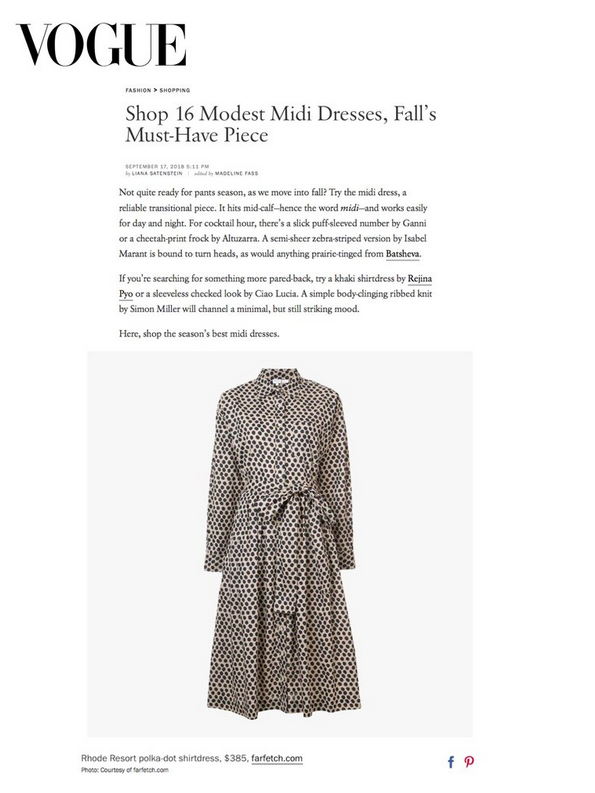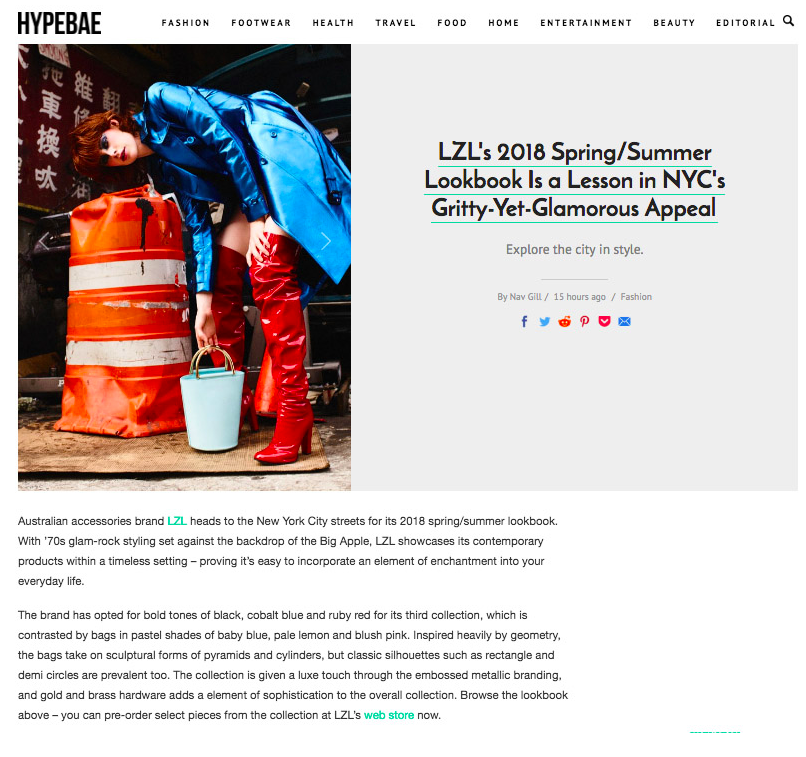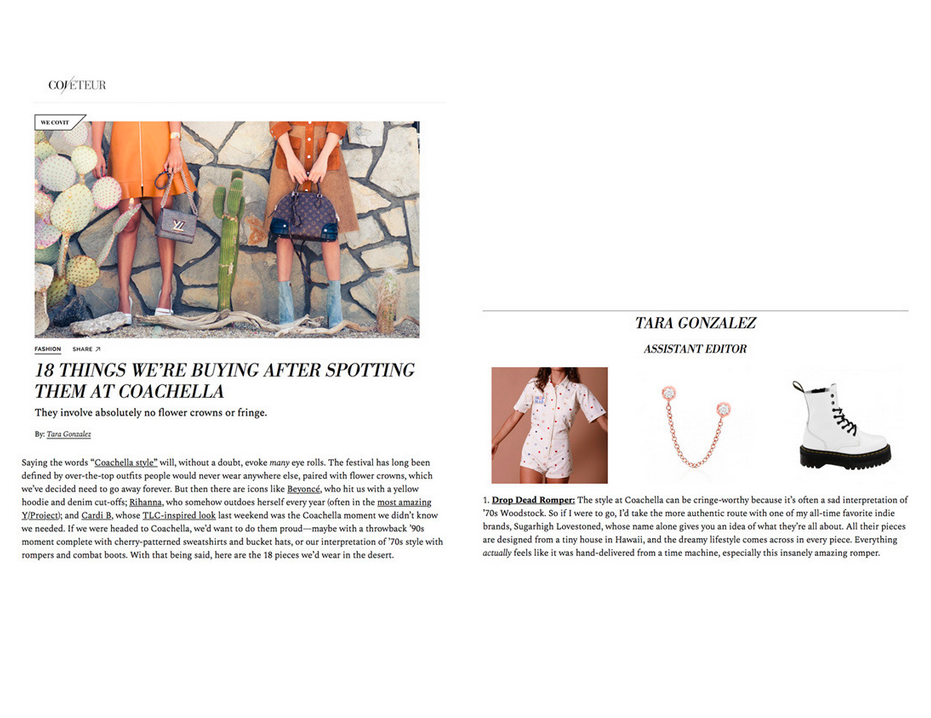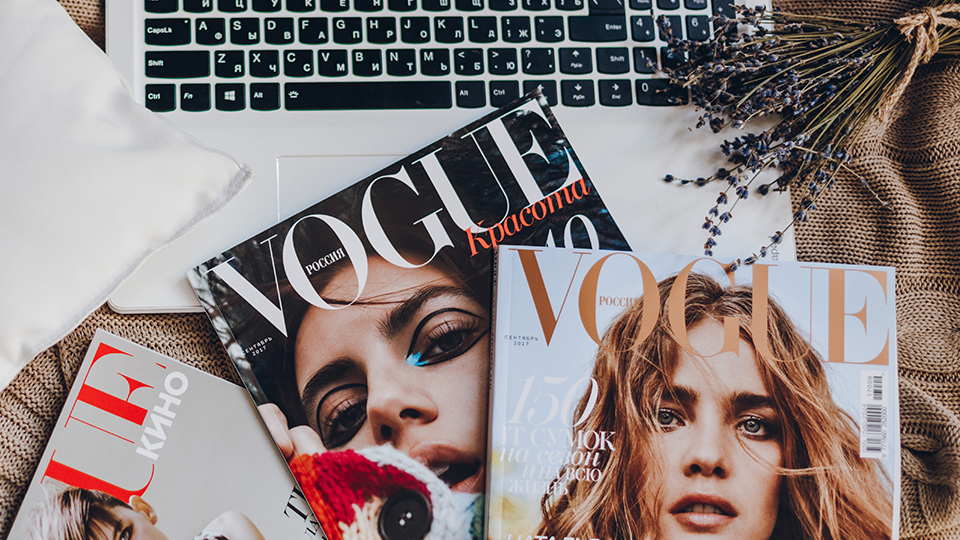Have you launched a successful PR strategy for your small fashion business?
An excellent PR firm can secure quality press for your new fashion business – and in a very short period of time. While it may require a significant investment, the results are certainly worthwhile. However, hiring a PR agency at $2,500-$4,000 monthly retainers may not be feasible for every brand’s initial product marketing budget.
Note: If you do go the PR agency route, comb through your options carefully. Be sure to take particular care with agencies that try to do everything. Every agency is usually only very good at one aspect of the business. Consider your needs, then speak to the agencies who specialize in what you want. You should start to see results in the form of your first press placements approx. 8-12 weeks after beginning work with a PR firm.
Thankfully, with the right strategies, it’s possible to achieve quality in-house PR for your small fashion business. If you’re prepared to manage public relations on your own, here are a few key pieces of advice to keep in mind.
1. Determine Your Defining Story.
There are many independent fashion brands out there in the market. Being new is not enough to be newsworthy since new businesses emerge all the time. Ask yourself the right questions to determine your key defining story.
- Why should you be running your business?
- Why does your product(s) matter?
- What newness are you bringing to the space?
- Why launch your small fashion business at this time?
- Why price at these price points?
- Why are you marketing to this particular customer base?
Ask yourself a lot of “whys” and develop their answers. They’ll help tremendously as you pitch to secure press.
2. Get Familiar with the 2 Types of Press for Brands.
There are two different types of press for brands: product features and editorials.
Product Features
When a digital or print publication features several products in a story in a format such as “The Top 10 Handbags for Spring” or similar highlights, they’re referred to as product features. These products are 100% visible and thus able to receive plenty of attention.

Editorials
Editorials are the creative, fashionable and usually very stylized spreads you see in print and digital magazines. Stylists and fashion editors pull various apparel pieces and accessories from various brands to style them together in interesting, alluring – sometimes even imaginative ways. They feature items from established heritage labels and independent fashion brands alike. The stylists receive product for pulls either directly or via their agencies. Due to the nature of editorials, your product(s) may be featured while not being 100% discernible in the shot.
Still, editorials come with their own special set of benefits, including influencer visibility and getting product in front of celebrity stylists and talent (i.e. top models and celebrities).
3. Develop Editor Relationships.
The entire realm of public relations is based on developing relationships. Whether you’re aiming for brand features, product stories, founder interviews or product placements, who you know and the quality of those relationships matter.

First things first. Always pitch the appropriate contact, every time. Editors are often overwhelmed by press releases and pitches. It’s important to start with a good impression. For example, if you’re pitching a fashion feature story for Vogue, the right contact will likely be a different person for digital than it is for print. Similarly, when pitching print Vogue, you need to know if you should contact the senior market editor, the senior fashion editor or someone else. Do your research. Contacting the incorrect contact can lead to deleted emails or tossed mail, eliminating the chance for coverage.
Once you know who you should reach out to, find out the best time to get in touch. For most digital considerations, pitching time is immediate so you can pitch at almost any time. Print is very different. Most publications require you to pitch at least 3 months prior to when the content would be featured. For holiday gift guides and other prominent issues, planning and pitching may be required even further in advance. For example, products featured in November issues are pulled in the summer.
4. Adopt These Pitching Rules of Thumb.
- Always pitch the right person and at the right time for their editorial needs. The magazine’s masthead will come in handy. You can also use LinkedIn to confirm an editor’s role.
- Avoid large, heavy attachments. Link out to content or embed images in the email.
- Lead with a casual or catchy subject line, one that piques curiosity. Your subject line is incredibly important. It’s typically the deciding factor for whether or not the recipient will open your email. A casual subject line may read as simply as “Hey!”. A catchy subject line offers many possibilities. One such example is “Former Barneys Buyer Launches Luxury Sock Line”.
- Craft brief paragraphs. Open with a 5-sentence paragraph, quickly getting into the reason why you’re getting in touch. Write 5 bullet points below this paragraph, briefly touching on the highlights and gist of your pitch. Finally, close the email asking if possible synergy exists with a future topic. If you’re reaching out regarding a launch, ask if it’s of interest to them and ask if they’d like to schedule a call.
- Close your pitch emails letting the editors know you’ll keep them posted as things develop on your end. This will allow you to keep the conversation going in the future. Just like with buyers, independent fashion brands should maintain ongoing relationships with the press.

5. Know What Happens Next.
- Interested editors will ask for samples. Sample production is one of the most expensive aspects of any brand’s product marketing budget. Manage the details of where they’ve been sent, when and why… at all times.
- It’s a great idea to visit once you’ve started to build a relationship. Let the editor know when you’ll be in town and ask if they’d like to see your collection in person at that time. Try to visit the office in about 6 months from the time you’ve started building a rapport.
- Most magazines are also in the ad business. Don’t be surprised to hear from the head of ad sales after you’ve sent an editor a pitch. They may try to sell you space in an advertorial. Many advertorials are in big magazines with extensive reach. However, the conversion doesn’t exist. All you can say is that you’ve been featured in that particular publication and it will cost you a few thousand dollars. If you have the space in your product marketing budget and you believe you can leverage the coverage wisely, then it’s okay to go ahead with it as well. The key is having a complete understanding of the what and the why of every investment you make.
Scaling Retail clients have been featured in Vogue, Glamour, Harper’s Bazaar, The Coveteur, goop and a number of other top global publications. We’d love to help your small fashion business do the same. Let’s begin with a 30 minute consultation session to understand your business’ unique positioning, goals and needs. Once we’ve determined we’re the best fit, we’ll continue with a bespoke marketing strategy to help you give your business the attention it needs. Call us at 310-957-5264 or email us at hello@scalingretail.com.
